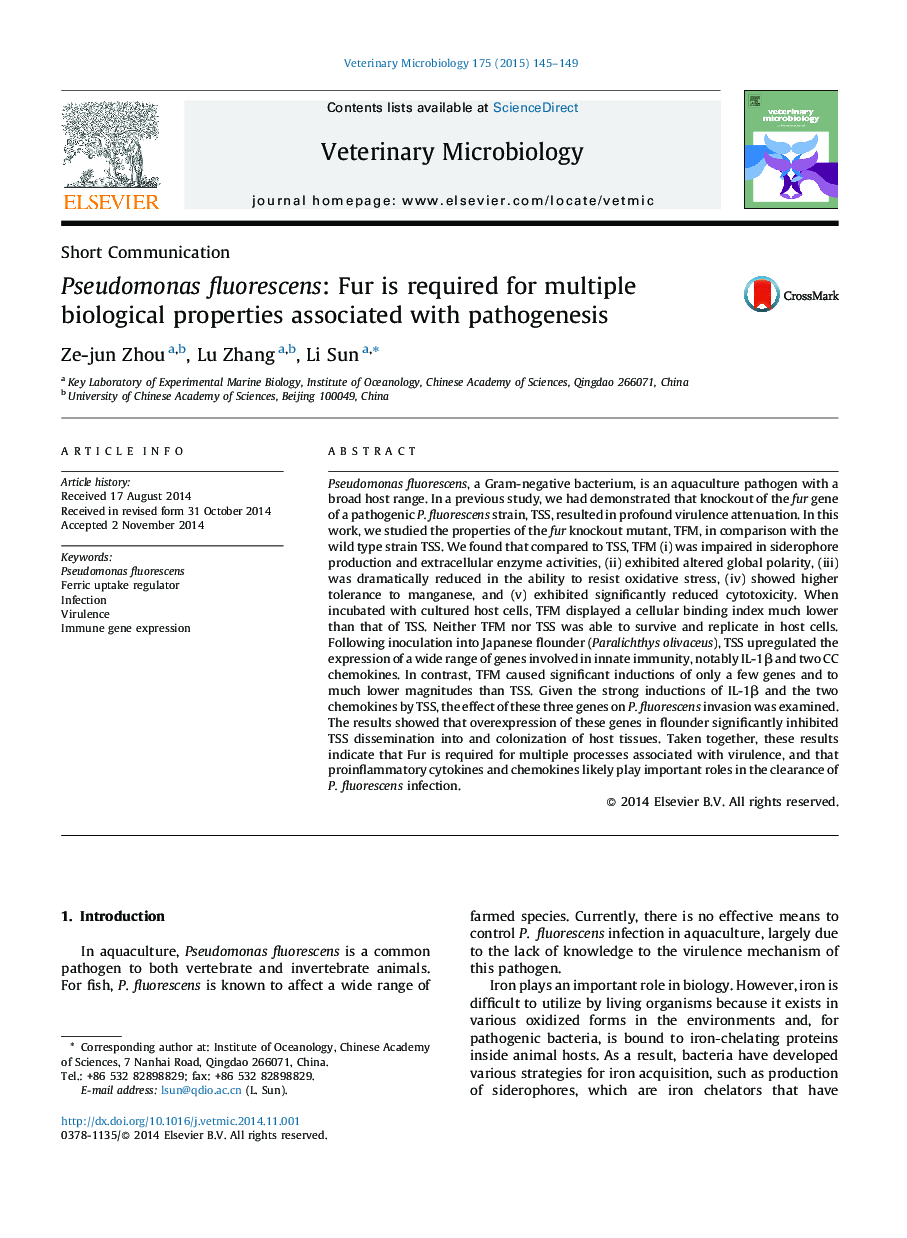| کد مقاله | کد نشریه | سال انتشار | مقاله انگلیسی | نسخه تمام متن |
|---|---|---|---|---|
| 2466573 | 1111937 | 2015 | 5 صفحه PDF | دانلود رایگان |

• TFM, a fur mutant, was defective in producing siderophores and extracellular enzymes.
• TFM was more sensitive to oxidative stress and more tolerant of manganese.
• TFM exhibited reduced cytotoxicity and binding capacity to host cells.
• The wild type strain TSS, but not TFM, strongly induced host immune gene expression.
• Overexpression of TSS-upregulated genes in flounder inhibited bacterial infection.
Pseudomonas fluorescens, a Gram-negative bacterium, is an aquaculture pathogen with a broad host range. In a previous study, we had demonstrated that knockout of the fur gene of a pathogenic P. fluorescens strain, TSS, resulted in profound virulence attenuation. In this work, we studied the properties of the fur knockout mutant, TFM, in comparison with the wild type strain TSS. We found that compared to TSS, TFM (i) was impaired in siderophore production and extracellular enzyme activities, (ii) exhibited altered global polarity, (iii) was dramatically reduced in the ability to resist oxidative stress, (iv) showed higher tolerance to manganese, and (v) exhibited significantly reduced cytotoxicity. When incubated with cultured host cells, TFM displayed a cellular binding index much lower than that of TSS. Neither TFM nor TSS was able to survive and replicate in host cells. Following inoculation into Japanese flounder (Paralichthys olivaceus), TSS upregulated the expression of a wide range of genes involved in innate immunity, notably IL-1β and two CC chemokines. In contrast, TFM caused significant inductions of only a few genes and to much lower magnitudes than TSS. Given the strong inductions of IL-1β and the two chemokines by TSS, the effect of these three genes on P. fluorescens invasion was examined. The results showed that overexpression of these genes in flounder significantly inhibited TSS dissemination into and colonization of host tissues. Taken together, these results indicate that Fur is required for multiple processes associated with virulence, and that proinflammatory cytokines and chemokines likely play important roles in the clearance of P. fluorescens infection.
Journal: Veterinary Microbiology - Volume 175, Issue 1, 30 January 2015, Pages 145–149